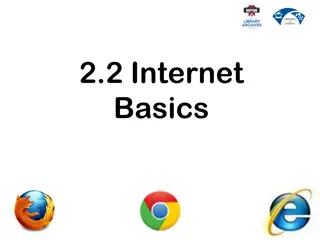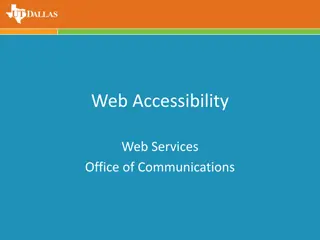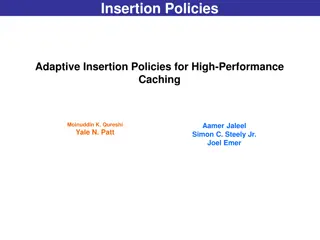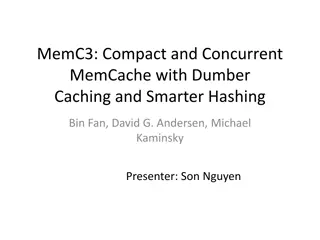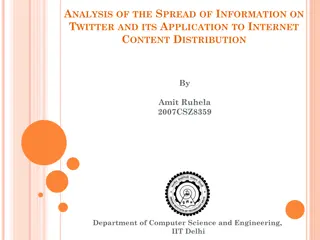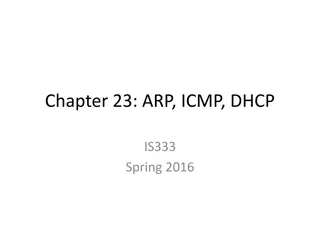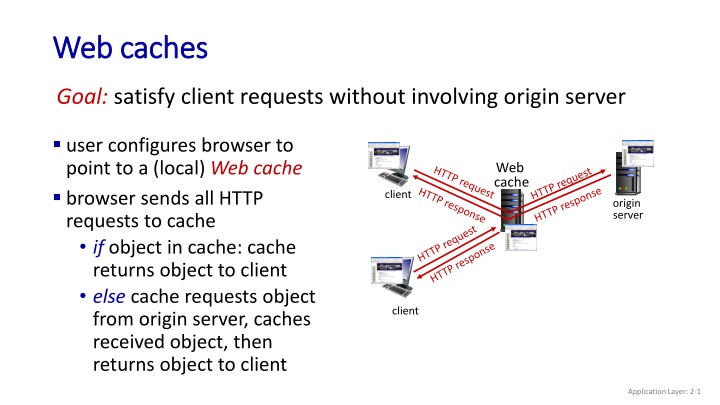
Understanding Web Caching for Improved Performance
Discover how web caching works to satisfy client requests efficiently without involving the origin server. Learn about the benefits of web caching, scenarios, and options to enhance network performance, reduce response times, and optimize data delivery.
Download Presentation

Please find below an Image/Link to download the presentation.
The content on the website is provided AS IS for your information and personal use only. It may not be sold, licensed, or shared on other websites without obtaining consent from the author. If you encounter any issues during the download, it is possible that the publisher has removed the file from their server.
You are allowed to download the files provided on this website for personal or commercial use, subject to the condition that they are used lawfully. All files are the property of their respective owners.
The content on the website is provided AS IS for your information and personal use only. It may not be sold, licensed, or shared on other websites without obtaining consent from the author.
E N D
Presentation Transcript
Web caches Web caches Goal: satisfy client requests without involving origin server user configures browser to point to a (local) Web cache browser sends all HTTP requests to cache if object in cache: cache returns object to client else cache requests object from origin server, caches received object, then returns object to client Web cache client origin server client Application Layer: 2-1
Web caches (aka proxy servers) Web caches (aka proxy servers) Web cache acts as both client and server server for original requesting client client to origin server Why Web caching? reduce response time for client request cache is closer to client reduce traffic on an institution s access link Internet is dense with caches enables poor content providers to more effectively deliver content server tells cache about object s allowable caching in response header: Application Layer: 2-2
Caching example Caching example Scenario: access link rate: 1.54 Mbps RTT from institutional router to server: 2 sec web object size: 100K bits average request rate from browsers to origin servers: 15/sec avg data rate to browsers: 1.50 Mbps origin servers public Internet 1.54 Mbps access link Performance: access link utilization = .97 LAN utilization: .0015 end-end delay = Internet delay + access link delay + LAN delay = 2 sec + minutes + usecs problem: large queueing delays at high utilization! institutional network 1 Gbps LAN Application Layer: 2-3
Option 1: buy a faster access link Option 1: buy a faster access link Scenario: access link rate: 1.54 Mbps RTT from institutional router to server: 2 sec web object size: 100K bits average request rate from browsers to origin servers: 15/sec avg data rate to browsers: 1.50 Mbps 154 Mbps origin servers public Internet 154 Mbps 1.54 Mbps access link Performance: access link utilization = .97 LAN utilization: .0015 end-end delay = Internet delay + access link delay + LAN delay = 2 sec + minutes + usecs Cost: faster access link (expensive!) institutional network .0097 1 Gbps LAN msecs Application Layer: 2-4
Option 2: install a web cache Option 2: install a web cache Scenario: access link rate: 1.54 Mbps RTT from institutional router to server: 2 sec web object size: 100K bits average request rate from browsers to origin servers: 15/sec avg data rate to browsers: 1.50 Mbps origin servers public Internet 1.54 Mbps access link Cost: web cache (cheap!) institutional network Performance: LAN utilization: .? access link utilization = ? average end-end delay = ? 1 Gbps LAN How to compute link utilization, delay? local web cache Application Layer: 2-5
Calculating access link utilization, end Calculating access link utilization, end- -end delay with cache: with cache: suppose cache hit rate is 0.4: 40% requests served by cache, with low (msec) delay 60% requests satisfied at origin rate to browsers over access link = 0.6 * 1.50 Mbps = .9 Mbps access link utilization = 0.9/1.54 = .58 means low (msec) queueing delay at access link average end-end delay: = 0.6 * (delay from origin servers) + 0.4 * (delay when satisfied at cache) = 0.6 (2.01) + 0.4 (~msecs) = ~ 1.2 secs lower average end-end delay than with 154 Mbps link (and cheaper too!) end delay origin servers public Internet 1.54 Mbps access link institutional network 1 Gbps LAN local web cache Application Layer: 2-6
Conditional GET Conditional GET server client Goal:don t send object if cache has up-to-date cached version no object transmission delay (or use of network resources) client: specify date of cached copy in HTTP request If-modified-since: <date> server: response contains no object if cached copy is up-to-date: HTTP/1.0 304 Not Modified HTTP request msg If-modified-since: <date> object not modified before <date> HTTP response HTTP/1.0 304 Not Modified HTTP request msg If-modified-since: <date> object modified after <date> HTTP response HTTP/1.0 200 OK <data> Application Layer: 2-7





